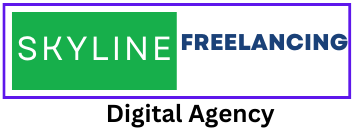What’s video captioning? This is the art of putting text version of the speech and different sounds that may be provided on TV, DVDs, online videos, at cinemas, and theaters. Video captioning makes videos more accessible to a greater audience.
There are two terminologies used while captioning. The term “Closed Caption” [cc] versus “Open Caption” means that the captions are not visible on the screen until they’re put on by the viewer while open caption or burnt-in caption means that the captions are visible to all viewers as they always remain embedded in the video.
Here are 9 reasons why every transcriber should learn Video Captioning. This will help you decide whether it’s a good venture or not.
1. Increased Job Opportunity
Video Captioning is an on-demand skill. If you’re a freelancer, you might find that in the field that you specialize in; sometimes the jobs are scarce as the low season hits. So, by adding video captioning skills to your resume, you increase chances of landing more gigs online.
There are so many videos being uploaded online every minute on platforms like YouTube, TikTok, and Vimeo every second. Most of these videos need to be captioned, and your skills come in handy here.
2. Diversity
It’s always good to diversify. For example, if you’re a transcriber offering transcription services, it’s good to learn video captioning. This gives you a higher chance of landing more projects. You might find a client who has transcription files, and they also need the video to be captioned. By diversifying, one can offer an all-around service to their clients.
It’s good to learn as many skills that you can, as far as they’re in line with the services that you offer. There’s no harm in learning, it only increases chances of landing more jobs from long-term clients or even repeat clients.
3. Good Comprehension
Video Captioning plays a great role in online learning. Most of the students find the captioned video to be very helpful as they help them with good comprehension. When the human mind hears and reads at the same time, it helps one remember better.
Closed captions also improve viewers’ experience for those who are not Native English speakers. Learners whose English is their second language find captions to be very helpful, as the captions allow them to read as they listen.
4. Increases Video Views and SEO
Adding closed captions to a video increases the views and also the SEO. Since search engines can’t watch videos, adding captions allows them to crawl the video content for better indexing.
Also, closed-captioned YouTube videos attract more views and lifetime views compared to non-captioned videos.
Longer transcripts also get optimized and paginated for keywords and optimize video search rank.
5. Gives Deaf and Hard to Hear Viewers Accessibility
Closed Captions [cc] were first created for the hard of hearing and deaf audience to aid them in comprehension. Time-synchronized video captioning is a great alternative for millions of people who have hearing loss globally.
So, closed captions increase your audience with a big margin because these viewers can now access and consume your content.
6. Easy Creation of Original Content
Content creators and market researchers normally use recorded video clips, montages, or reels, but combing through that content without the aid of a transcript can be an uphill task. After the video is captioned, the content can be searched and scanned easily for topics and key phrases.
Direct quotes can be copy-pasted directly for original content creation. Captions can also be used as report outlines or even study guides for learners.
7. Helps With Legal Compliance
Media broadcasts and Television closed captioning standards are strictly regulated by the FCC in the US.
There are more than 60% with hearing loss either in an education setting or in the workforce. No matter what the situation is, people with hearing disability have the right to access the same materials as the rest of the population. Thus, this is the reason why anti-discrimination laws were enforced.
8. User Experience and Video Search
Video Captioning helps viewers on your site to find videos easily after a simple search. A professionally-captioned video allows your audience to search for keywords and see them everywhere they appear.
If the user is searching for a particular part of the video, they can click on the word and the video moves there and starts playing. Your viewers can as well scan the whole video library on the playlist search using a specific keyword.
This smooth user experience gives your content big revenge and great customer satisfaction.
9. Good Viewing in Sound Sensitive and Noisy Environments
Closed Captions [cc] are used to access video content in sound-sensitive and noisy environments such as restaurants and bars. This may be in a setup where patrons are not able to hear because of background noise or in a situation where different televisions are broadcasting different programs
Conclusion
The fact that we are living in an era where technology is rapidly changing and video popularity and use is increasing at a very high rate and also the hard of hearing and the deaf population is also growing, is a good reason for the high demand for video captioning.
Also, you will come across video captions/subtitles. These terms are used interchangeably in many countries.
If you would like to add video captioning skills to your resume, we have a course on this which you can enroll here.

